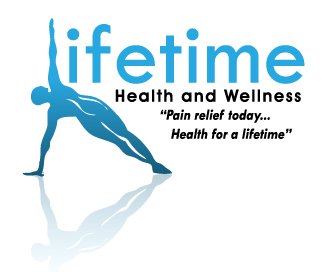If they weren’t a necessary component
of a popular sport, the movements
involved with a golf swing would be
banned by most chiropractors. The
repetitive, one-sided nature of the golf
swing makes it a common cause for
back injuries. They’re several reasons
why the golf swing is so problematic
for the body. First, it requires great
flexibility, which most people lack.
Second, it requires good posture, which
is also uncommon. Third, the power
move in golf is always one-sided,
leading to muscle and joint imbalances.
Flexibility for Power
According to Butch Harmon, one of
the foremost authorities on the golf
swing, in order for golfers to generate
more power and more distance, they
are coached to “feel their arms staying
in front of the body as they turn back.”1
Todd Anderson, a Golf Digest teaching
professional, goes into more detail by
suggesting that a proper backswing
should see “the shoulders starting
parallel to the target line and turning 90
degrees, the hips turning to 45 degrees,
and the knees turning to 22 degrees.” 2
This means the backswing will generate
a lot of spinal twist and loading.
Compounding this amount of torque
with near-maximum acceleration in the
downswing is a recipe for disaster.
Repeating this move 50-70 times per
round makes it difficult to stay injury
free over the course of your golfing
life.
This kind of movement requires
flexibility not only in the spine, but also
in the shoulders and hips. To ensure
that you have the kind of flexibility that
allows you to take a proper golf swing,
have your chiropractor check the range
of motion of these joints. If you have
any tightness in these areas, your
chiropractor can perform specific
adjustments to help these joints move
better and may suggest stretches to help
keep them moving properly.
Good Posture for the
Set Up
When a golf pro is asked to create a
good, repeatable golf swing, one of his
first tasks is to establish a proper set up.
This is the golfer’s starting position
when addressing the ball. Posture is of
utmost importance here. Maintaining
natural curves throughout the spine
with good posture ensures that maximum
rotation will be achievable in both
the backswing and the follow through.
To illustrate this point, sit on a bench
and allow your body to slouch. Cross
your arms, placing your hands on
opposite shoulders. Then, try to rotate
fully to one side, then the other. Ask
someone to observe how far you can
go. Try again, but this time start by
sitting upright first. Notice how much
further your spine can rotate when you
start with good spinal posture.3
Ask your South Elgin chiropractor Dr Schening, if your lower
back has the proper spinal curve when
standing normally and when demonstrating
a set-up position for the golf
swing. If you suffer from restrictions
and displacements in your body, these
could be preventing you from achieving
normal postural positions. And it
could be taking 10, 20 or 30 yards off
your best drives! See how much easier
it is to swing the golf club after your
chiropractor corrects this problem.
One-Sided Sport
Requires Special
Attention
The amount of effort exerted by most
amateur golfers when driving a golf
ball has been estimated at 90 percent of
their peak muscular activity. This level
of exertion has been compared to those
used in sports like football, hockey and
martial arts.3 This amount of physical
effort, combined with the one-sided
nature of the swing, requires a lot of
special attention. If a person is not
careful, over-exertion can easily lead to
stress and strain.
Chiropractic treatments by Dr Schening are very
effective at re-establishing proper
biomechanics in and around every joint
of the body. However, maintaining
proper function remains the patient’s
responsibility. Preparation for golf
should include an adequate warm-up,
proper stretching, and a lot of core
stabilization training. It’s no wonder
that many of the PGA professionals
have trainers and chiropractors join
them when they go on tour. Make sure
to tell your South Elgin chiropractor that you are a
golfer so particular attention will be
given to the areas of the body to
maximize your golf swing.
References and Sources:
1. Anderson T. Power – Load it
and let it go.
Golf Digest 2010; 61(1): 68-71.
2. Harmon B. Nick Watney’s power
pointers: How he became a great
driver – you can, too.
Golf Digest 2010; 61(2): 68-71.
3. Blanchard J. & Finkel L.
Chiropractic and Golf: A therapeutic
treatment and prevention
program.
Online:
http://www.dynamicchiropractic.com
/mpacms/dc/article.php?id=1833
